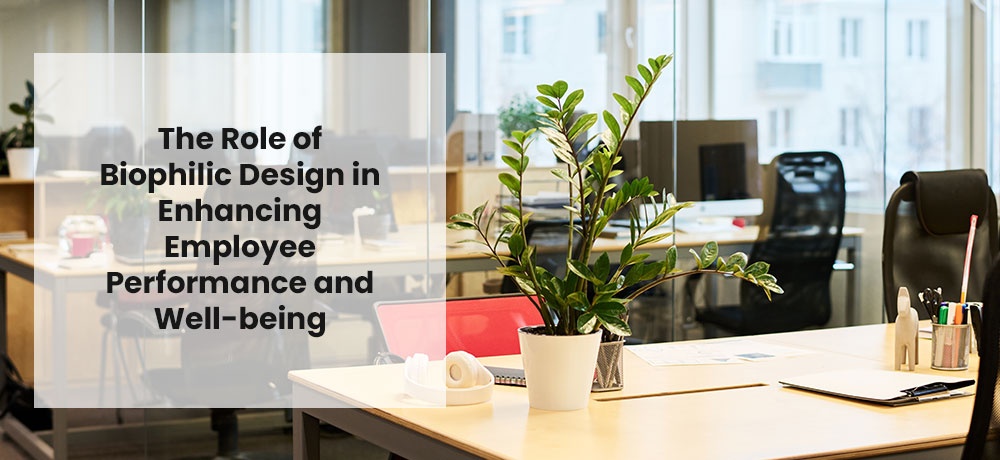The Role of Biophilic Design in Enhancing Employee Performance and Well-being

Introduction:
In today's fast-paced and technology-driven world, employees often find themselves disconnected from nature while spending the majority of their time indoors. However, humans have an inherent connection with nature, and incorporating elements of the natural world into the built environment can have a profound impact on employee well-being and performance. This is where biophilic design comes into play. In this blog post, we will explore the role of biophilic design in enhancing employee performance and well-being in the workplace. By understanding the principles and benefits of biophilic design, businesses can create healthier, more productive, and inspiring work environments.
- Understanding Biophilic Design:
Biophilic design is an approach that seeks to incorporate nature into the built environment, creating spaces that evoke a sense of connection with the natural world. It involves the use of natural materials, colors, patterns, textures, and the integration of living elements such as plants and water features. Biophilic design also emphasizes access to natural light, views of nature, and the incorporation of natural shapes and forms. By simulating the experience of being in nature, biophilic design has been shown to have numerous positive effects on employee well-being and performance. - Enhancing Physical and Mental Well-being:
Biophilic design has been linked to a range of health benefits for employees. Exposure to natural elements has been shown to reduce stress levels, lower blood pressure, and improve overall mental well-being. The presence of plants indoors can help purify the air, increase oxygen levels, and reduce the prevalence of indoor pollutants. Natural light and views of nature have been associated with better sleep quality, increased vitamin D production, and enhanced mood. By incorporating biophilic design elements, businesses can create healthier work environments that support employee well-being. - Increasing Productivity and Creativity:
Biophilic design has been found to enhance employee productivity and creativity. Research shows that exposure to nature and natural elements can improve cognitive function, attention span, and problem-solving skills. Employees working in spaces with biophilic design elements have reported higher levels of job satisfaction, increased focus, and reduced mental fatigue. The presence of greenery and natural elements has also been linked to higher levels of creativity and innovation. By creating work environments that foster these qualities, businesses can harness the full potential of their employees. - Promoting Connection and Collaboration:
Biophilic design can create a sense of connection and community among employees. Natural elements and green spaces have a calming effect and promote social interaction. Common areas that incorporate biophilic design elements can serve as gathering spaces, encouraging collaboration, communication, and the sharing of ideas. Employees are more likely to feel a sense of belonging and engagement in environments that foster connection with nature and with their colleagues. - Optimizing Cognitive Function:
Biophilic design has a positive impact on cognitive function, memory, and attention restoration. Exposure to natural elements, such as water features or views of greenery, can improve cognitive performance and provide mental breaks throughout the workday. Incorporating elements like natural textures, colors, and patterns can create a soothing and harmonious environment that supports cognitive function and decision-making. - Creating a Sustainable and Eco-Friendly Workplace:
Biophilic design aligns with sustainability principles by emphasizing the use of natural materials, energy-efficient systems, and green practices. By incorporating biophilic design, businesses can demonstrate their commitment to environmental stewardship and sustainability. This aligns with employee values and can contribute to a positive company culture and employee engagement.
Conclusion:
Biophilic design offers a powerful framework for enhancing employee performance and well-being in the workplace. By incorporating elements of nature, natural light, greenery, and the use of natural materials, businesses can create environments that promote physical and mental well-being, increase productivity and creativity, foster connection and collaboration, optimize cognitive function, and demonstrate a commitment to sustainability. Embracing biophilic design principles allows businesses to create healthier, more inspiring, and productive workspaces that benefit both employees and the organization as a whole.